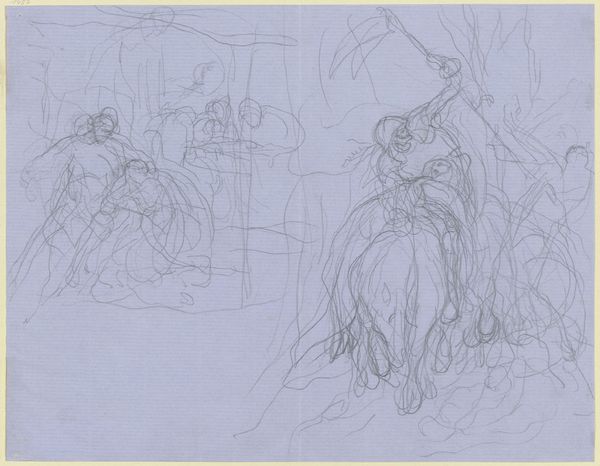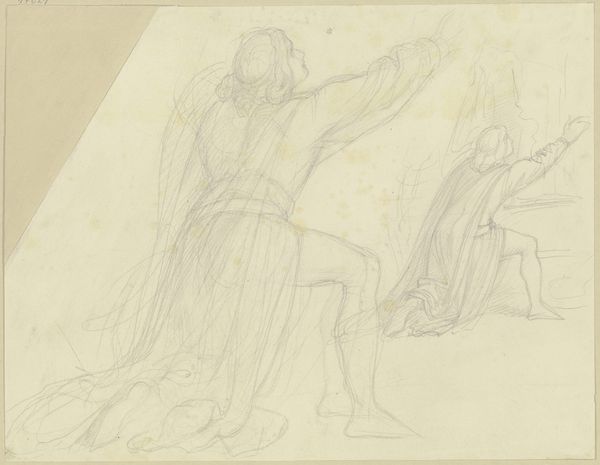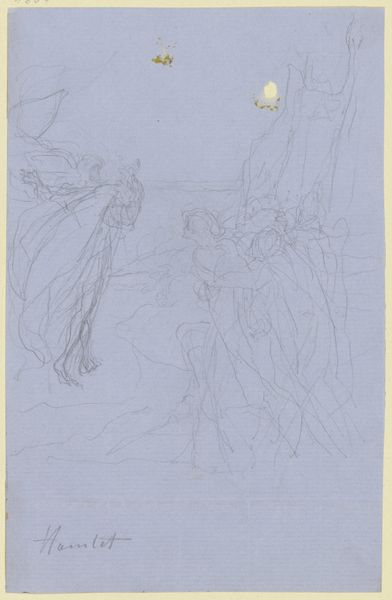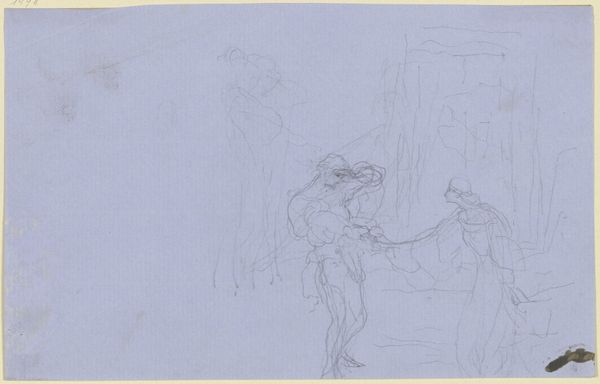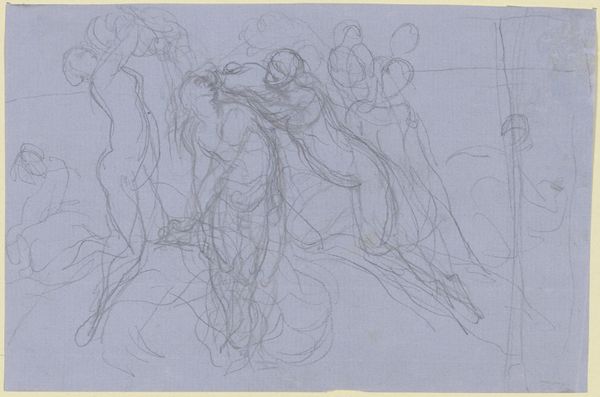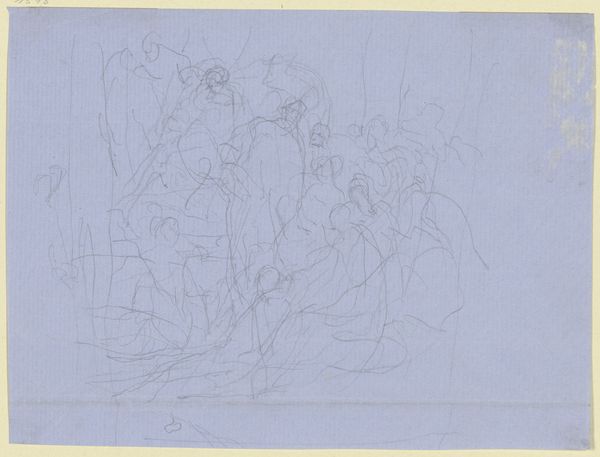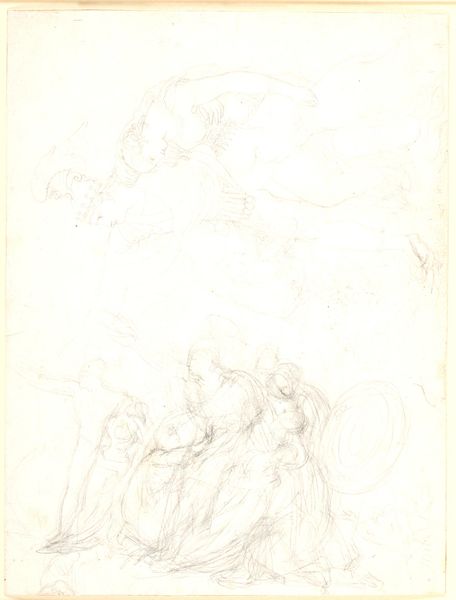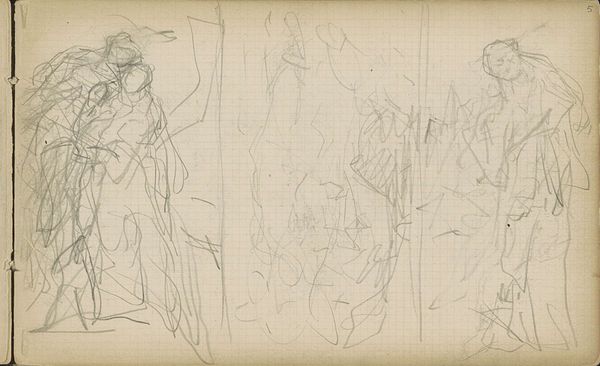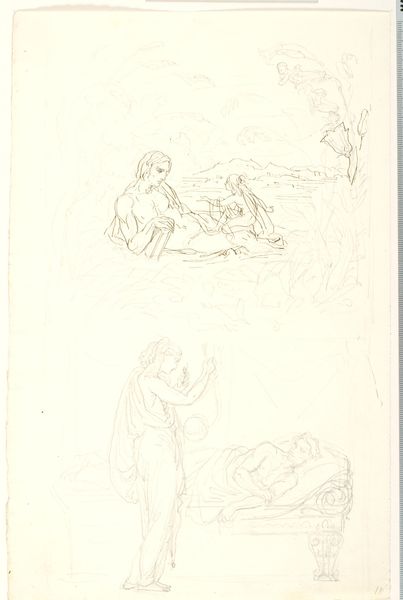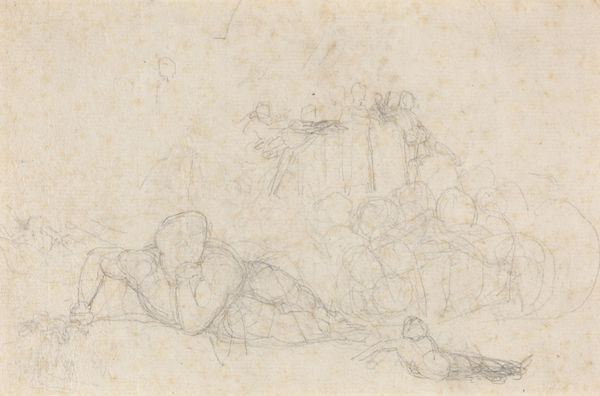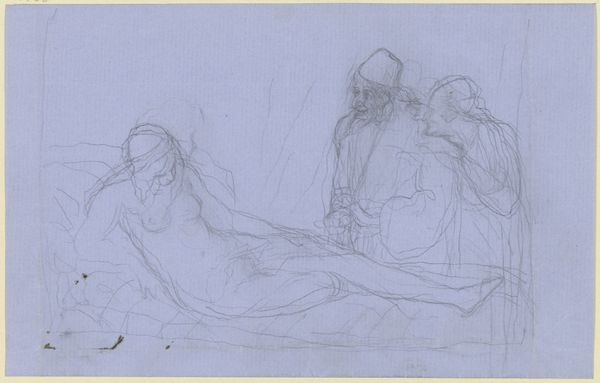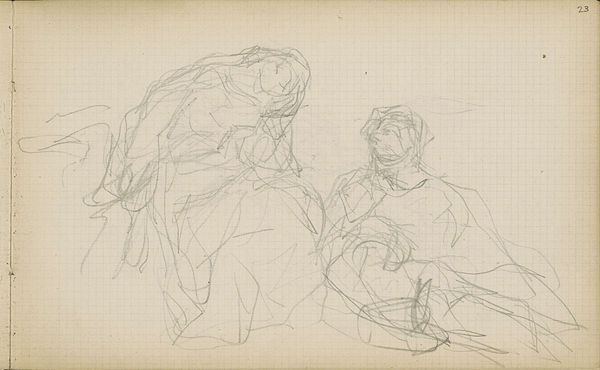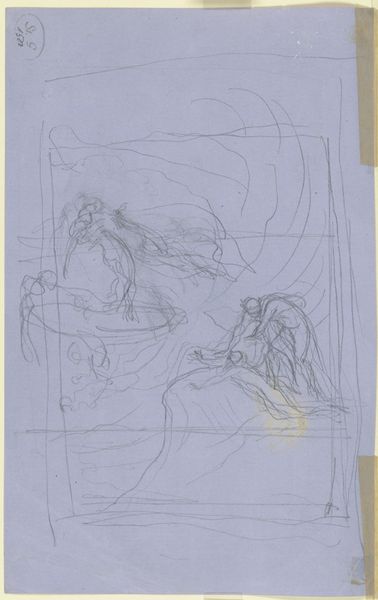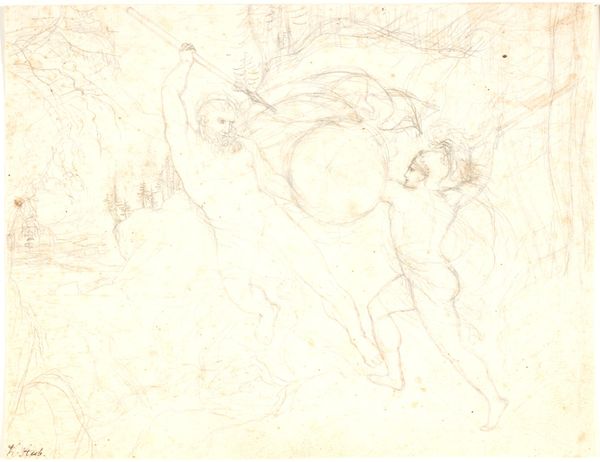
drawing, paper, pencil
#
drawing
#
pencil sketch
#
figuration
#
paper
#
romanticism
#
pencil
#
history-painting
Copyright: Public Domain
Curator: Looking at this piece, what strikes me most is the stark use of pencil against paper. Victor Müller's "Hamlet begegnet dem Geist seines Vaters," currently held here at the Städel Museum, really captures the ghostly essence of Shakespeare’s play. Editor: Immediately, I’m struck by the ethereal quality—it's almost as though the scene is unfolding in a dream. The light pencil lines give everything a sense of transience. You can almost feel the anxiety rippling through the figures huddling together. Curator: Absolutely, and that speaks to the Romantic era's fascination with emotional intensity and the supernatural. Müller uses line and form to convey the psychological drama of the scene. How the public responded to it then really hinged on what Shakespeare and gothic tropes represented for the emerging national identities. Editor: Exactly. This work reflects broader narratives surrounding inherited trauma. Hamlet isn't just encountering a ghost; he's confronting patriarchal expectations, abuse of power, and a corrupt system. These themes continue to resonate deeply within our social frameworks. The ambiguity offered by the drawing only reinforces those complex issues. Curator: It’s interesting to consider how Müller's work plays within artistic depictions of this play overall. During his time, it was about asserting particular values and societal roles that art had in cultivating an idea about German nationhood. This sketch also acted as a form of art education and contributed towards ideas of citizenship and history painting. Editor: Yes, the pencil sketch form really underlines the tentative nature of memory and grief. Who dictates what becomes of art in historical memory? This approach allows the ghost, and therefore perhaps the grievances of the dead, a voice. Müller offers space for viewers to feel and connect with intergenerational struggle. It acts almost as a challenge, reflecting our moment today and how we understand inherited suffering. Curator: That is insightful—art in these public spaces certainly acts as a cultural battleground. Editor: Agreed. What better ground to understand our complex past, present and futures than the aesthetic realm?
Comments
No comments
Be the first to comment and join the conversation on the ultimate creative platform.
